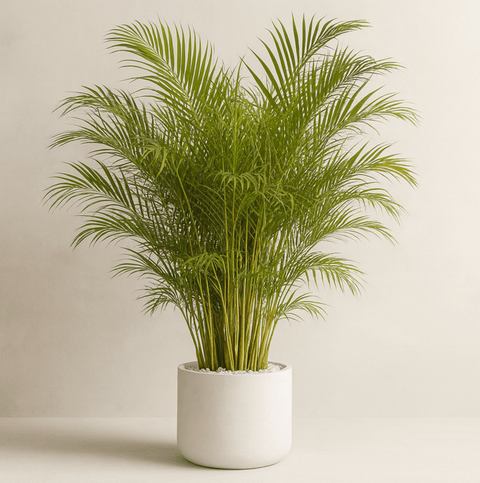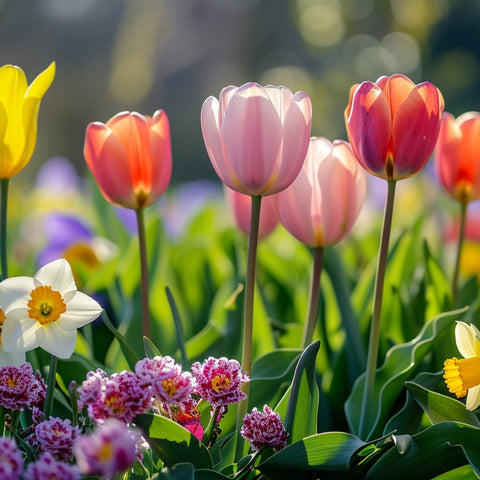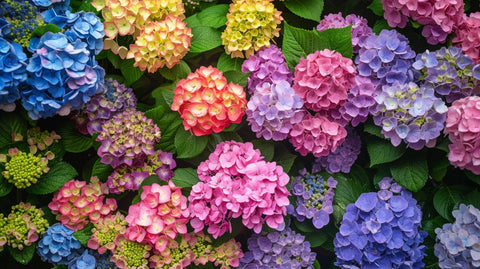Blog Post - Bulbs to plant in May
Are you ready to add a burst of color to your garden this spring? Look no further than bulbs! Planting bulbs in May can be a rewarding and exhilarating experience, as they bring vibrant blooms and a touch of beauty to any outdoor space. In this comprehensive guide, we'll explore the significance of planting bulbs in May, factors to consider before planting, top bulbs to plant, step-by-step planting instructions, care tips, and more. So, roll up your sleeves and get ready to dig in!
Why Plant Bulbs in May?

Planting bulbs in May offers several benefits. First and foremost, it allows you to enjoy a stunning display of blooms during the spring and summer months. The flowers produced by bulbs, such as tulips, daffodils, lilies, gladiolus, and dahlias, can brighten up any garden and create a visually captivating scene. Additionally, planting bulbs in May provides an opportunity for gardeners to experiment with different varieties and colors, allowing them to showcase their creativity and personal style.
Factors to Consider before Planting Bulbs in May
Climate and Hardiness Zones

Before diving into bulb gardening, it's essential to consider your climate and hardiness zone. Different bulbs thrive in different conditions, so selecting bulbs suitable for your specific region is crucial. Consult a hardiness zone map to determine which bulbs are best suited for your area. This will help ensure their successful growth and long-lasting beauty.
Sunlight Requirements
Just like any other plant, bulbs need adequate sunlight to thrive. Make sure to plant your bulbs in an area where they'll receive at least six hours of direct sunlight each day. Sunlight is necessary for bulbs to produce energy through photosynthesis, which fuels their growth and, in turn, results in beautiful and healthy flowers.
Soil Conditions

The quality of your soil plays a crucial role in the success of your bulb gardening endeavor. Bulbs prefer well-drained soil with good fertility. Amend your soil with organic matter, such as compost, to improve its structure and increase its water-holding capacity. Avoid heavy clay soils that retain water, as they may cause the bulbs to rot. A loose and fertile soil will provide the ideal growing environment for your bulbs.
Watering
Proper watering is essential for the health and growth of your bulbs. After planting, water the bulbs thoroughly to ensure that the soil is evenly moist. Be mindful of not overwatering, as excessive moisture can lead to rotting. Throughout the growing season, monitor the soil moisture levels and water accordingly, keeping in mind the specific watering needs of each bulb variety.
Top Bulbs to Plant in May
Now that you have a better understanding of what to consider before planting bulbs in May, let's delve into the exciting world of bulb varieties. Here are some top picks to get you started:
Tulips

Tulips are iconic spring flowers available in a wide range of colors, shapes, and sizes. From classic single blooms to fringed and parrot varieties, there's a tulip for every garden style. Choose early, mid, or late-season tulips to enjoy a continuous display of color throughout spring. Tulip bulbs should be planted in the fall, but potted tulip plants can be planted in May for instant gratification.
Daffodils

Daffodils, also known as narcissus, are beloved for their cheery yellow and white blooms. They are low-maintenance, deer-resistant, and perfect for naturalizing in meadows or under trees. Daffodils can be planted in May, although it's typically recommended to plant them in the fall for optimal growth. Nevertheless, potted daffodil plants can be purchased and transplanted in May for an immediate impact in your garden.
Lilies

Lilies are known for their elegant and fragrant flowers that command attention. They come in various shapes, colors, and sizes, ranging from delicate Asiatic lilies to bold and showy Oriental lilies. Plant lily bulbs in May for a summer display that will take your breath away. Choose a sunny spot with well-drained soil to ensure the best performance from these stunning flowers.
Gladiolus

Gladiolus, with its tall spikes of vibrant, trumpet-shaped flowers, is a showstopper in the garden. They offer a wide array of colors and are particularly striking when planted in groups. While gladiolus bulbs are usually planted in the spring, May is still an excellent time to get them in the ground. Choose an area with full sun and well-drained soil, and prepare to be amazed by their dazzling display.
Dahlias

Dahlias are renowned for their stunning and intricate blooms, available in a mesmerizing range of colors and forms. They are an excellent choice for adding drama and elegance to your garden. While dahlias are typically planted in the spring after the last frost, potted dahlia plants can be planted in May for an instant burst of color. Ensure they receive full sun and provide support for their tall stems.
Step-by-Step Guide for Planting Bulbs in May
Now that you have an overview of the top bulbs to plant in May let's dive into the nitty-gritty of planting. Follow these step-by-step instructions to ensure the success of your bulb gardening venture:
1. Site Preparation
Select a suitable planting area that meets the sunlight and soil requirements of your chosen bulbs. Clear the area of any weeds or grass, and use a garden fork or shovel to loosen the soil to a depth of about 12 inches. Remove any rocks, roots, or debris that may hinder bulb growth.
2. Bulb Selection
Choose healthy bulbs that are firm and free from mold or blemishes. Look for bulbs that are plump and feel heavy for their size. Avoid any bulbs that appear soft, shriveled, or dried out. Larger bulbs tend to produce larger and more robust blooms.
3. Planting Instructions
Follow the planting instructions specific to each bulb variety, as planting depths and spacing requirements may vary. As a general rule, bulbs should be planted at a depth of two to three times their own height. For example, if a bulb is one inch tall, it should be planted two to three inches deep. Place the bulbs in the planting hole with the pointed end facing up, and cover them with soil. Gently firm the soil around the bulbs to eliminate any air pockets.
4. Watering and Mulching
After planting, water the bulbs thoroughly to settle the soil and provide them with moisture. Apply a layer of organic mulch, such as straw or shredded bark, to conserve soil moisture and suppress weed growth. Mulch also helps regulate soil temperature and protects the bulbs from extreme heat or cold. Water the bulbs regularly, ensuring the soil remains moist but not soggy.
Care Tips for Bulbs Planted in May
Once you've planted your bulbs, it's essential to provide them with proper care to ensure their successful growth and abundant blooms. Here are some care tips to keep in mind:
Watering
The watering needs of bulbs can vary depending on the variety and weather conditions. As a general rule, water the bulbs thoroughly after planting and continue to water them regularly throughout the growing season. Aim to keep the soil evenly moist, but avoid overwatering, as excess moisture can promote rotting. Check the soil moisture levels regularly and adjust your watering schedule accordingly.
Fertilization
Bulbs can benefit from a balanced fertilizer application during their active growth period. Apply a slow-release fertilizer or a granular bulb-specific fertilizer according to the package instructions. Make sure to water the bulbs thoroughly after fertilizing to ensure the nutrients penetrate the soil and reach the bulb roots. Avoid over-fertilizing, as it can lead to excessive foliage growth at the expense of flower production.
Protection
Protect your bulbs from pests, such as squirrels, rabbits, or deer, who may find them irresistible. Use deterrents or physical barriers to keep these critters at bay. Additionally, be on the lookout for any signs of diseases or fungal infections. If you notice any discoloration, wilting, or unusual growth, promptly remove and dispose of affected plants to prevent the spread of disease.
Overwintering
As the growing season comes to an end, it's essential to prepare your bulbs for the upcoming winter. In colder climates, where the ground freezes, lift tender bulbs, such as gladiolus or dahlias, before the first frost. Brush off any excess soil and allow the bulbs to dry in a cool, dry location for a few weeks. Once dry, store them in a cool, frost-free area until the following spring, when they can be replanted. Hardy bulbs, such as tulips and daffodils, can typically be left in the ground over winter.
Conclusion
Planting bulbs in May is a joyful and rewarding experience that allows you to bring beauty and vibrancy to your garden. By considering factors such as climate, sunlight, soil conditions, and watering, you can set the stage for a successful bulb gardening venture. Explore the plethora of bulb varieties available, from tulips and daffodils to lilies, gladiolus, and dahlias, and let your creativity blossom. By following our step-by-step planting guide and implementing our care tips, you'll be well on your way to a breathtaking display of blooms. Happy gardening!






























Comments (0)
There are no comments for this article. Be the first one to leave a message!